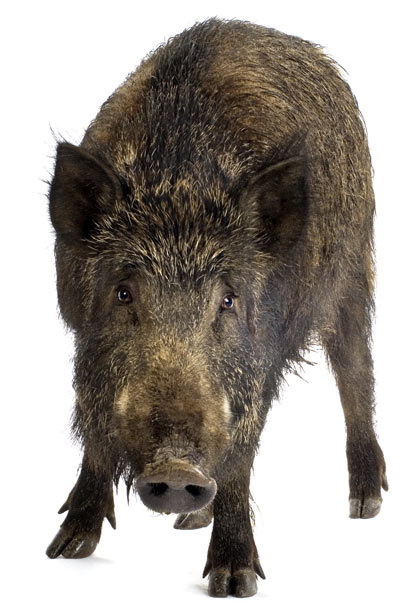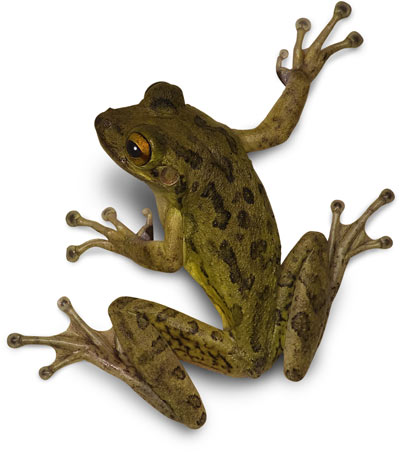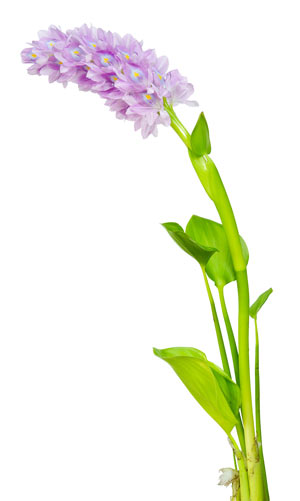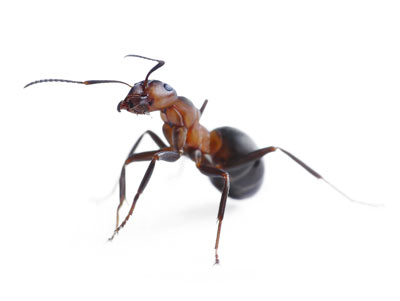
Anyone who’s read A Land Remembered, Patrick D. Smith’s historical fiction novel about Florida’s frontier days in the 1800s, knows the Sunshine State is infinitely different today than it was 150 years ago. We’re far removed from a time when millions of wild cattle roamed this peninsula, when panthers and wolves were common and carving a living out of this challenging land often cost a man his life.
Fast forward to the 21st century.
Most people think we’ve completely tamed and subdued this vast verdant state. A superficial glance at its many cities—with their bustling interstate highways, suburban neighborhoods and neatly contained landscaping—seems to confirm that.
Yet, amazingly (and thankfully) a significant amount of wilderness still remains. Within the thousands of acres of state parks, private land and, yes, even in suburban neighborhoods, a plethora of birds, mammals, reptiles, amphibians, invertebrates and vegetation have adapted to live alongside humans.
But not all of them technically “belong” here. Some of them shouldn’t be here at all, but they are—sometimes to the detriment of native species. The Florida Fish and Wildlife Conservation Commission (FFWCC) recognizes over 500 non-native fish and wildlife species living in Florida.
Pythons, Tegus & Monkeys, Oh My!
So, just how does a Burmese python or a South American lizard end up slithering around the forests—and neighborhoods—of Florida?
“A lot of times when you see an exotic species, it’s a ‘pet-released’ animal,” explains Kristen Sommers, exotic species coordination section leader with the FFWCC based in Tallahassee.
“If you have one individual that’s been released, it doesn’t create a population and will ultimately probably die. We worry about it when a reproducing and expanding population becomes established and causes an economical or ecological impact that might affect human health and safety.”
If you’ve watched any of the horror movies that involve giant snakes stalking humans, it’s easy to imagine frightening scenarios about running into a python somewhere in Marion County. Before you decide to forego your next hike in the Ocala National Forest, you’ll be glad to know Sommers isn’t concerned.
“I think people can pretty much put their minds at ease. We found during the freeze a couple years ago that the South Florida population of pythons was impacted. Our expectation is that the species isn’t going to move very far north.”
The tegu, a large black and white lizard native to Argentina that grows up to 4 feet long, has, on the other hand, been spotted at least once in the Ocala National Forest.
“There have been sightings across the state. Many instances have been released pets.” says Sommers, adding that the FFWCC only knows of two tegu poluations and those don’t involve Marion County.
So How Do Non-Native Animals Get Here? It’s hard to imagine deliberately releasing a non-native species, but that’s exactly how many of these animals become established. A local example is the Rhesus monkeys released in the 1930s near Ocala’s Silver Springs attraction. The monkeys, which are native to Asia, established populations along the Silver and Ocklawaha Rivers and were encouraged by boaters who often threw food to them along the shoreline.
The FFWCC has found that non-native marine species can hitch a ride in the ballast water of ships or attach themselves to hulls and propellers. Other non-native species arrive through international food markets. Such markets, often found in South Florida, sell imported fish and animals that are meant for food but that have, on occasion, escaped. The agency reported the confiscation in 2001 of several live snakehead fish—a species that is prohibited in Florida—from an Asian market in Broward County.

Here are just a few of the non-natives found in our neck of the woods.
Nine-Banded Armadillos
Those hapless creatures so often seen expired along Florida’s roadways are native to the southwestern United States and were first observed here in the 1920s. In addition to digging in yards, which doesn’t endear them to homeowners, the armored critters may carry diseases, including St. Louis encephalitis and even leprosy.
“They’re not native to Florida; some people think they got here from a traveling roadside circus or that they migrated here,” says Joy Hill, FFWCC’s public information coordinator for the 12-county region that includes Marion.
Wild Hogs
Now found in all 67 counties, feral pigs have been in Florida so long, you probably thought they were natives. Historians believe they were likely introduced by Spanish explorers as early as the 1530s. It’s not unusual for adults to weigh 150 pounds and reach 4 to 6 feet in body length. Property owners often complain that wild hogs root up and damage their land, even coming into neighborhoods at night. Even though wild hogs are routinely hunted, the population continues to thrive.
Coyotes
Well established in our area by the 1970s, coyotes may have been introduced to Florida by natural expansion of their range to fill the void left by red wolves and also because humans brought them in to hunt with dogs.
“There is a school of thought that coyotes filled the niche left over by the extirpation of the red wolves,” says Hill. “At this point, they’re considered ‘naturalized citizens’ of Florida.”
Native of the southwestern U.S., coyotes are survivalists and are now found in many states.
House Mouse
Believe it or not, these cute but pesky rodents aren’t native. It’s likely they hitched rides on ships and arrived on our peninsula with the early colonists. They are potential carriers of diseases that can affect humans.

Cuban Tree Frog
Introduced through packing materials in the early 1930s, this frog spread quickly and, today, is found in at least 36 counties. It preys on our native tree frogs and also competes with them for food. Cuban tree frogs have toxic skin secretions, which can be irritating to mucous membranes, so don’t handle them!
Red-Eared Slider
This is the turtle commonly sold in pet shops across the country, so it may have been introduced in Florida by intentional release. Found in freshwater lakes and rivers since about 1987 (including the Santa Fe River and Suwannee River drainage in Alachua County), their range is expanding. Adults can reach 12 inches long, and they compete with native turtles for food.
Brown Anole
Now found in 52 counties, these lizards were established in North Central Florida by the 1980s, and their range continues to expand. Originally from Cuba and the Bahamas, they arrived in South Florida via ships in the 1940s. Males can grow to 8 inches long. Brown anoles can displace native lizard species.
When Plants Become A Problem
“Non-native plants may not be very exciting, but management of these is very important,” notes Hill.
With aquatic plants, the solution isn’t easy but neither is it rocket science. Recreational boaters should do their part to help prevent the spread of invasive species by checking boat trailers, hulls and propellers before going from one body of water to another. Rinse them thoroughly, and dispose of any snails or plant life.
If your kids have gotten tired of caring for fish or turtles, find homes for those creatures, but don’t empty the aquarium in your yard or a body of water. That’s exactly how some non-native plant species can be introduced.
In your garden and yard, plant native species whenever possible. They’re well-suited to our area, typically easy to grow and require less water to thrive, so you’ll look like a real “green thumb” without a great deal of effort.
Here’s a look at some of the green and growing
invasive species around Marion County and beyond.
Hydrilla
Originally from Southeast Asia, hydrilla has been in Florida since the 1950s. It forms thick surface cover over bodies of water, causing the suffocation of many native aquatic plants and even fish.

Water hyacinths
Native of South America, this floating plant is now considered a major weed species in over 50 counties. It was introduced into the St. John’s River in the late 1800s and spread so rapidly that it began to interfere with steamboat passage on the river. Plant populations can double in size in just two weeks.
Air Potato
Considered a noxious weed in Florida, this native of Africa was introduced into Florida in 1905. Although a member of the yam family, it is quite toxic. The air potato is a rapidly growing, twining vine that can grow as much as 8 inches per day and can easily overtake native plants.
Giant Salvinia
An aquatic fern that may have been introduced to Florida with aqaurium or water garden plants, giant salvinia has invaded the Southeast. Native to South America, this fast-growing fern forms a thick floating mat on the water surface, crowding out native plants and interfering with fishing, boating and swimming.
Cogon Grass
North and Central Florida has an abundance of this tall, spiky grass, which hails from Southeast Asia and first arrived in the United States in 1922 as packing material for a plant shipment. Not suitable for livestock forage, it spreads rapidly and can overtake native grasses. Cogon grass, which can grow 4 feet tall, is considered a significant fire hazard and is known as one of the world’s top 10 weeds.
Japanese Climbing Fern
Believed to have been introduced as an ornamental plant in the 1930s, this rapidly growing plant grows up to 90 feet long. Adapated to both sun and shade, this native of Eastern Asia will cover trees and form thick, tangled canopies that create dense shade and eliminate native plants.
Obnoxious Insects
Florida seems to have more than its share of creepy-crawlies, but not all of them are natives.
Here are two that garner the most attention in Marion County.
Love Bugs
Despite the cutesy name, these insects are actually a type of black fly. More annoying than dangerous, love bugs appear seasonally in spring and fall in Florida, and no, they are not an escaped “science project” from the University of Florida, a common myth. Found in Texas as early as 1940, some researchers believe they arrived in Florida because their range extended due to winds; they may also have unwittingly hitched rides on vehicles and in sod shipments.

Red Imported Fire Ants (RIFA)
Thanks to a cargo ship from South America that docked in Mobile, Alabama, in the 1930s, the RIFA infests not only the Southeast, but much of the Southwest. These aggressive ants have been known to kill small and/or young wildlife and birds with their painful stings. Known for their burning sting, which causes an itchy pustule, fire ants can pose a danger to people who have allergic reactions. Not to mention their sting carries quite a punch for such a small creature!
So What’s The Solution?
If you see something unusual and think it might not be a native species, contact the FFWCC as soon as possible on their hotline at (888) IVE-GOT1.
“If you can get a photo of it, that’s even better because we can figure out what it is. If it needs to be addressed or captured, we may send out a wildlife officer right away,” says Sommers. “If you’ve got a smart phone, there’s also a phone app for Androids and iPhones. You can take a photo of it, and the app will send us all the data.”
Many non-native species—including a variety of snakes, lizards, frogs, turtles and more—are living right now as pets in homes throughout Florida. As a pet owner of one of these species, the best thing you can do is provide proper care and containment so they cannot escape.
If, for any reason, you no longer want to be responsible for such a pet, don’t turn it loose! It’s illegal to release into the wild any animal that is not native to Florida. Instead, contact local wildlife rehabilitators and nature centers to find out whether they can take in the animal or check out the FFWCC’s Exotic Pet Amnesty Program.
“At each event, we have between 50 to 100 people show up to relinquish an animal, mostly reptiles,” observes Jenny Novak, a wildlife biologist who organizes the Exotic Pet Amnesty Program and is the exotic species special projects leader for the FFWCC.
“We see different reasons as to why people bring in animals,” she adds. “Sometimes, the animal gets too large and they just can’t take care of it anymore. There may be personal issues, such as their health changes, and they aren’t physically capable of caring for the animal, or they may be moving to a state where having that animal is illegal.
Relinquished animals are placed with experienced, knowledgeable adopters who will give them good care and permanent homes.
Florida’s future rests in the hands of those of us who want to do right by this not-yet-totally-tamed state with its remarkably diverse array of wildlife. If we all do our small part, this great, green, growing place will remain a treasure for many years to come.
Learn More
Florida Fish and Wildlife Conservation Commission
(850) 488-4676 / (352) 732-1225 (regional office)
myfwc.com/wildlifehabitats/nonnatives
(888) 404-3922 (emergency & violations hotline—reward for Information)
To find out about the next Exotic Pet Amnesty event, call (850) 617-9554.






